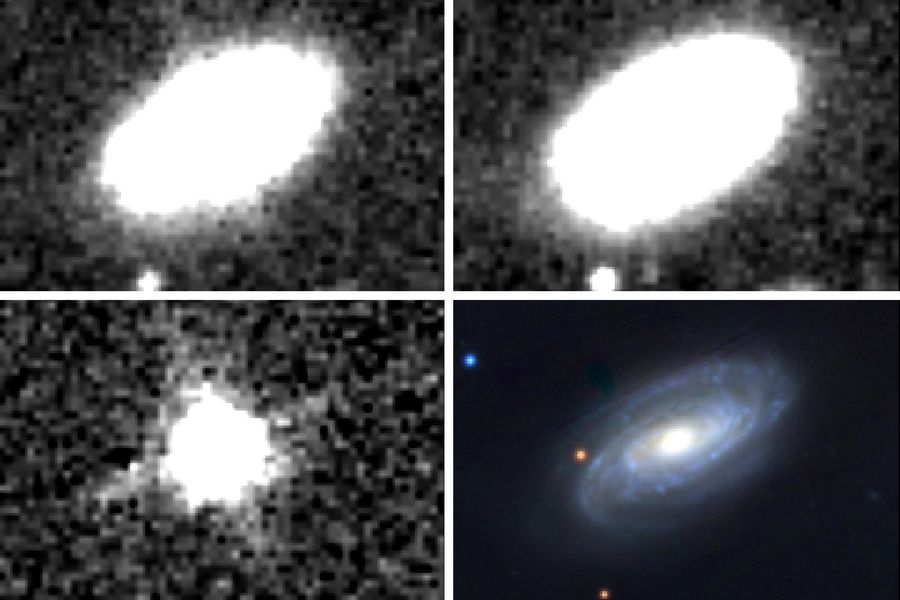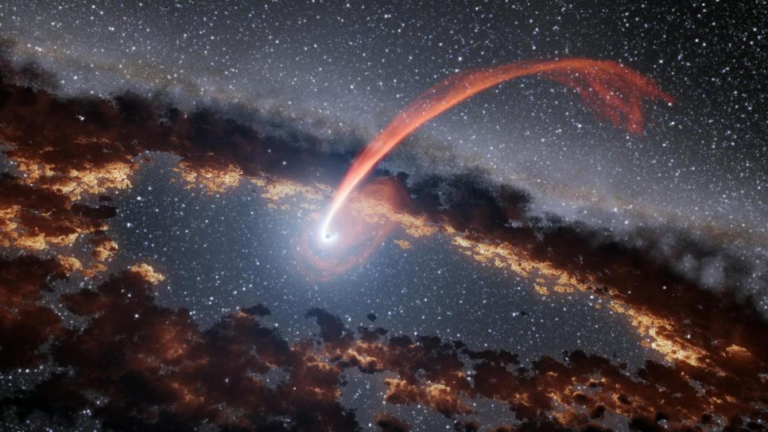The closest black hole that has ever been observed shredding a star has been discovered by scientists.
A supermassive black hole in the center of NGC 7392 galaxy shredded a star long ago. The light emitted during the event reached Earth in 2014, and scientists recently discovered it in their data. This occurrence is the closest example of a tidal disruption event (TDE), where the black hole’s enormous gravitational force pulls a star apart. The Astrophysical Journal Letters published the findings on April 28.
Astronomers detected the black hole, which was around 137 million light-years away from Earth, roughly 35 million times farther than Proxima Centauri, the nearest star to the sun. Although this distance may sound vast, scientists have only observed about 100 such events so far, and this one is four times closer than the previous “closest TDE to Earth.” The TDE was discovered in infrared, unlike most conventional TDE detections, which usually occur in X-rays, ultraviolet, and optical light.
According to Christos Panagiotou, the lead author and an astronomer at the Massachusetts Institute of Technology, discovering this TDE in such proximity implies that there may be a considerable number of similar events that traditional methods couldn’t detect. Therefore, to obtain a comprehensive understanding of black holes and their host galaxies, scientists should search for these events using infrared technology.
 A bright flare was detected from the galaxy NGC 7392 in 2015 (top left panel). Observations of the same galaxy were taken in 2010-2011 (top right), prior to the TDE. The bottom left shows the difference between the first two images, representing the actual, detected TDE. For comparison, the bottom right panel shows the same galaxy in the optical waveband. (Image credit: Panagiotou et al.)
A bright flare was detected from the galaxy NGC 7392 in 2015 (top left panel). Observations of the same galaxy were taken in 2010-2011 (top right), prior to the TDE. The bottom left shows the difference between the first two images, representing the actual, detected TDE. For comparison, the bottom right panel shows the same galaxy in the optical waveband. (Image credit: Panagiotou et al.)
The NEOWISE space telescope initially detected the TDE, prompting Panagiotou and colleagues to scrutinize data from numerous other observatories and space telescopes to learn more about the supermassive black hole in NGC 7392. They aimed to uncover the reason why this particular TDE only manifested in infrared, unlike other similar events that typically occur in more energetic wavelengths.
TDEs discovered in the past were mainly observed in green galaxies, which do not produce as many stars as blue galaxies but are not entirely inactive in star formation like red galaxies. Unlike these previous observations, NGC 7392 is a blue galaxy that generates a lot of dust while forming new stars, which can conceal the center of the galaxy, where the supermassive black hole resides, in ultraviolet and optical light. However, astronomers could see through this dust using infrared light and investigate what happens in the center. Therefore, this discovery suggests that astronomers should explore TDEs using infrared light as well.
In the statement, Suvi Gezari, an astronomer at the Space Telescope Science Institute, who was not involved in the research, stated that “Using infrared surveys to catch the dust echo of obscured TDEs has already shown us that there is a population of TDEs in dusty, star-forming galaxies that we have been missing.” By seeking TDEs in infrared light, scientists can gain further insight into how black holes devour stars.
Source:LiveScience
Do not forget to share your opinion with us to provide you with the best posts !
[zombify_post]




0 Comments